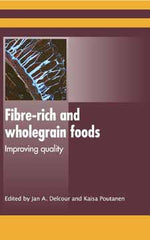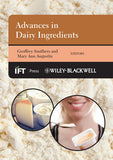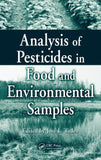Fibre-Rich and Wholegrain Foods Improving Quality edited by Jan A. Delcour
Fibre-Rich and Wholegrain Foods
Improving Quality
edited by Jan A. Delcour
2013 • 459 pages
Fibre-Rich and Wholegrain Foods addresses key research and best industry practice in the development of fibre-enriched and wholegrain products that efficiently meet customer requirements.
Coverage includes:
- analysis, definition, regulation and health claims associated with dietary fibre and wholegrain foods
- sources of dietary fibre including: wheat and non-wheat cereal, vegetable, fruit and potato fibres
- quality improvement of fibre-enriched dairy products, meat products, seafood, beverages and snackfoods
- soluble and insoluble fibre in infant nutrition
Part One introduces the key issues surrounding the analysis, definition, regulation and health claims associated with dietary fibre and wholegrain foods. The links between wholegrain foods and health, the range of fibre dietary ingredients and a comparison of their technical functionality are discussed, as are consumption and consumer challenges of wholegrain foods.
Part Two addresses dietary fibre sources, including wheat and non-wheat cereal dietary fibre ingredients, vegetable, fruit and potato fibres.
Part Three focuses on Improving the quality of fibre-rich and wholegrain foods, including such cereal products as wholegrain bread, muffins, pasta and noodles. It also addresses fibre in extruded products.
Part Four covers quality improvement of fibre-enriched dairy products, meat products, seafood, beverages and snack foods. Companion animal nutrition as affected by dietary fibre inclusion is discussed, as well as a consideration of soluble and insoluble fibre in infant nutrition.
CONTENTS
1. Definitions, regulations and health claims associated with dietary fibre and wholegrain foods
- Defining dietary fibre and wholegrain
- Analysing the dietary fibre and wholegrain content of food
- Labelling
- Recommendations and guidelines for dietary fibre and wholegrain intake
- Health claims for dietary fibre and wholegrain
2. Dietary fibre analysis in foods
- An integrated procedure for the measurement of total dietary fibre, including resistant starch and non-digestible oligosaccharides
- Updates of the original integrated total dietary fibre procedure
- Interlaboratory evaluation of integrated total dietary fibre procedures
- Progress in acceptance of dietary fibre methodology by codex alimentarius
3. Health aspects of dietary fibre
- Fibre: definitions, measurement and intake
- Characterization and digestive impact of fibre
- Dietary fibre (DF) and disease
- Fibre and obesity
- Dietary fibre (DF) and microbiota
4. Wholegrain foods and health
- Epidemiological studies
- Human interventions
- Food factors important for the health effects of whole grain foods
5. The range of fibre dietary ingredients and a comparison of their technical functionality
- Technical functionalities of dietary fibre ingredients
- Insoluble dietary fibre ingredients
- Soluble high molecular weight dietary fibre ingredients
- Soluble low molecular weight dietary fibre ingredients
- Resistant starch
6. Consumption and consumer challenges of wholegrain foods
- Whole grain and fiber consumption
- Wholegrain foods and consumer challenges: internal (personal) factors
- Wholegrain foods and consumer challenges: external factors
- Approaches to introducing whole grain foods
7. Improving the content and composition of dietary fibre in wheat
- Fibre content and composition of wheat fractions
- Genetic variation in arabinoxylan (AX) amount, structure and composition
- Specific effects of agronomy and environment on arabinoxylan (AX) and β-glucan content and composition
- Heritability and genetic analysis of arabinoxylan (AX) and β-glucan content
- Exploitation of genetic variation in grain dietary fibre in plant breeding
8. Non-wheat cereal dietary fibre ingredients
- Cereal cell walls as dietary fibre
- Cereal bran production technology
- Technologies to improve the properties of cereal brans as source of dietary fibre
- Food applications of cereal fibre ingredients
9. Vegetable, fruit and potato fibres
- Fruits and vegetables as source of dietary fibre
- Effects of processing on fruit and vegetable dietary fibre
Part 3: Improving the Quality of Fibre-Rich and Wholegrain Foods: Cereal Products
10. Fibre-enriched and wholegrain breads
- Fibre enrichment of breads
- Processing
- Properties of dietary fibre enriched dough and breads
11. Performance of resistant starches in baking: a case study on fibre-rich and wholegrain muffins
- Muffin batter
- Muffin properties
- Sensory shelf life of muffins
- Sensory characteristics of muffins
12. Fibre in extruded products
- Extrusion cooking
- Effects of dietary fibre (DF) on the extrusion process and product quality
- Effects of extrusion on dietary fibre properties
13. Fibre-enriched and wholewheat pasta
- Process variables affecting pasta production
- Enrichment of pasta with whole grains or dietary fibre
- Relationship between ingredient selection, processing and nutrition
14. Fiber-enriched and wholewheat noodles
- Noodle quality attributes
- Whole-wheat noodles
- Fiber-enriched wheat-flour noodles
- Wheat-flour noodles and resistant starch
- Whole-grain and fiber-enriched noodles from other botanical sources
Part 4: Improving the Quality of Fibre-Enriched Food: Other Products
15. Fibre-enriched dairy products
- Dairy product categories and formulations
- Challenges of fibre enrichment
- Potential dietary fibre supplements for dairy products
- Potential product applications
16. Fibre-enriched meat products
- Strategies for the development of healthier meat products
- Fibre as an ingredient in meat product formulation
- Dietary fibre in meat products
17. Fibre-enriched seafood
- Fortification with dietary fibres of aquatic origin
- Fortification with dietary fibres of terrestrial origin
18. Fibre-enriched beverages
- Adding fibres into drinks
- Types of fibres suitable for fortifying non-dairy drinks: gums and beta-glucans
- Types of fibres suitable for fortifying non-dairy drinks: fructans and glucose products
- Typical beverage formulations containing fibre
- Troubleshooting
19. Fibre-enriched snack foods
- Extrusion processing of ready-to-eat snacks
- Nutritional benefits of extruded whole grains
- Cereal by- products as a new source of dietary fibre
- Improving the quality of extruded products
20. Companion animal nutrition as affected by dietary fiber inclusion
- Effects of dietary fibre on food intake and gastric and small intestinal function in companion animals
- Effects of dietary fibre on intestinal function of companion animals
- Clinical significance of dietary fibres in companion animal diets
- Strategies for incorporating fibre into companion animal diets
21. Soluble and insoluble fibre in infant nutrition
- Non-digestible carbohydrates in human milk
- Soluble non-digestive carbohydrates of non human milk origin
- Insoluble non-digestive carbohydrates
Index


















